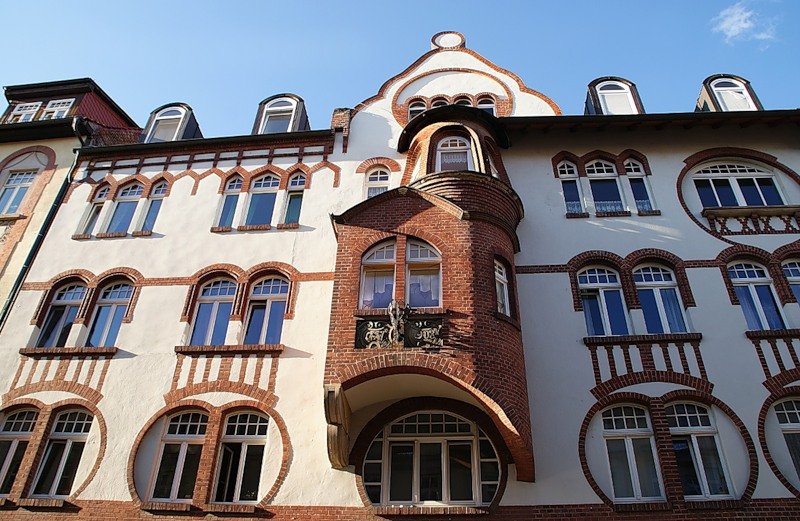#371. Elegant contrasting Art Nouveau facade with an expressive brick bay window
Before us stands a magnificent example of Art Nouveau (Jugendstil) architecture from the late 19th to early 20th century. The facade demonstrates the characteristic combination of functionality and decorative elements typical for this style. The central accent of the composition is a red brick bay window that creates a striking contrast with the white plastered surfaces of the main part of the building.
The facade's detailing deserves special attention: decorative brick window frames, flowing curved lines characteristic of Art Nouveau, and elegant parapet design. The expressive rhythm of windows with semi-circular tops lends the building elegance, while the combination of brick and plastered surfaces creates an interesting textural interplay.
Round porthole windows and the unusual shape of the mansard roof with small dormer windows add originality to the facade. When designing a facade for a private home, one could adopt these techniques of contrasting materials and textures, experimenting with window shapes, and paying attention to details. Even in a modern execution, the combination of brick elements with plastered surfaces can create an expressive and memorable appearance for a building.
